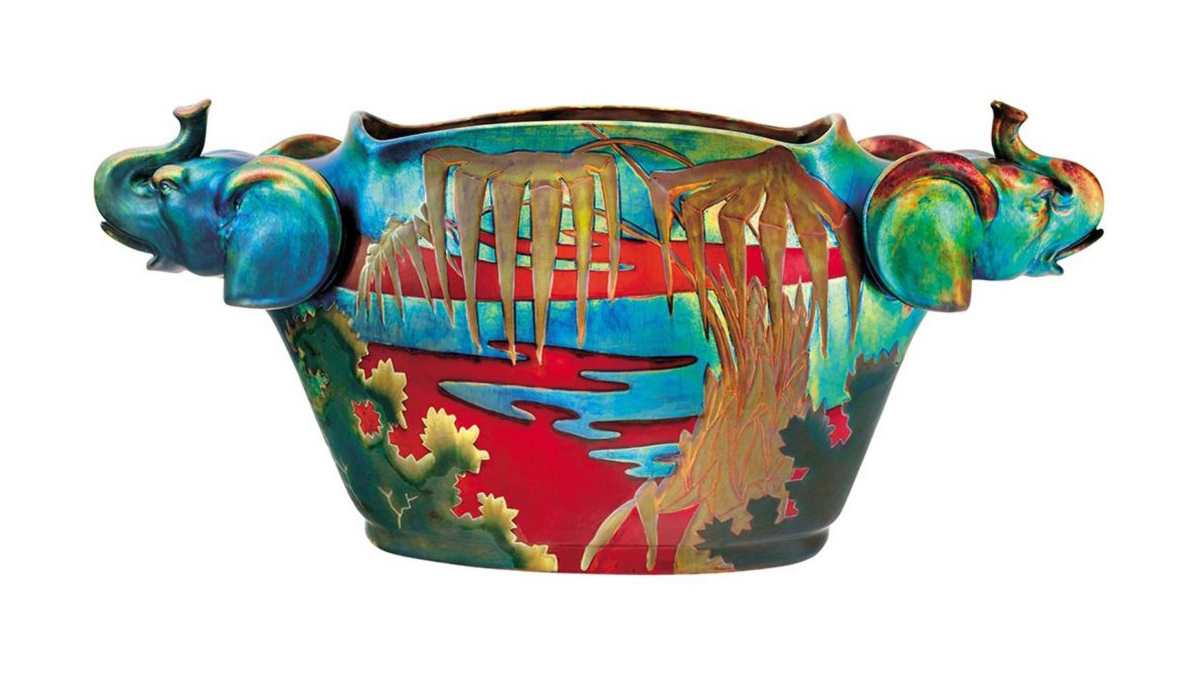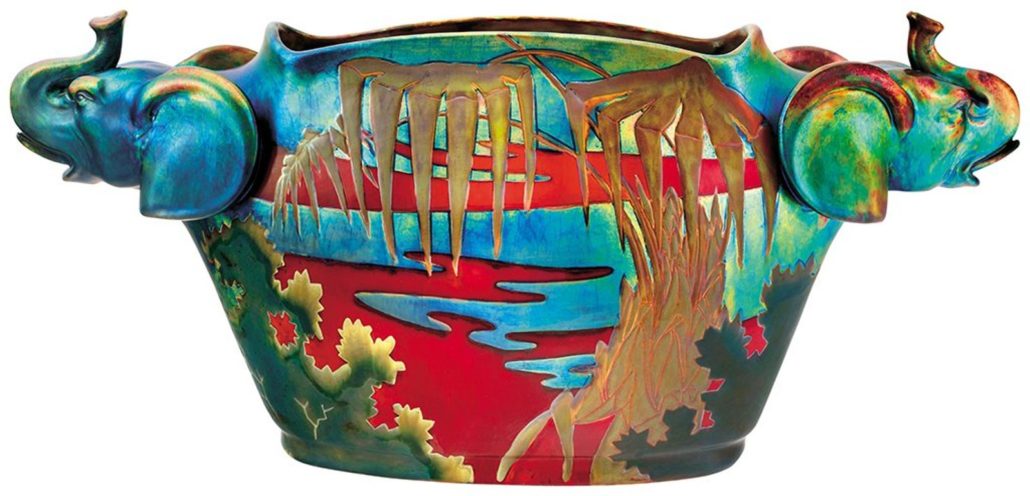
NEW YORK – Renowned for its vibrantly decorated art pottery in the Islamic aesthetic, beautifully crafted in hues of metallic glitter, green, purple and every color of the rainbow, the Zsolnay factory began making modest wares but within 20 years, as its artistic and technical skills grew, it garnered international attention at the Vienna World’s Fair in 1873.
Born April 19, 1828, Vilmos Zsolnay founded his factory in 1853 in Pecs, a major city in southwest Hungary, selling household pots and architectural ornamentation at first but his craftsmanship and skills as an innovator set him on a path into the luxury goods market.
Zsolnay porcelain and stoneware are known for their rich colors and ornate decoration that paid homage to Islamic art and inspired several developments. A tireless experimenter and innovator, Zsolnay developed pyrogranite in the 1880s, a ceramic named for its ability to withstand firing at high temperatures. Its durability can be seen in the many beautiful buildings built in the Austro-Hungarian monarchy and Central Europe since the mid-1880s.
Zsolnay’s world travels and the warm reception he received in Vienna led him to experiment with raw materials and glazes to create elegant luxury wares to compete with the likes of English Minton, Sevres, and the Royal Porcelain Factory of Berlin.
Among Zsolnay works most coveted by collectors are the eosin pieces with their color-changing, brilliantly lustrous glaze that evinced the luxuriousness of the Art Nouveau era. In 1891, Vilmos made his most famous technical discovery of the eosin glaze, which he worked with chemists to develop, spending the final nine years of his life refining it. Well-known guest artists, including the painter Jozsef Rippl-Ronai, were invited to the factory to collaborate on select, small-series projects. The most common eosin glaze used by Zsolnay was a striking greenish-gold, with the older pieces mostly favoring more of a golden tone than pure green.

After Vilmos’ death in 1900, his son Miklos Zsolnay (1857-1922) became the factory’s owner. The company’s products subsequently hit new highs in artistic and economic success on the world stage, and Zsolnay was awarded a gold medal in 1901 at St Petersburg and the Grand Prize at St Louis’ 1904 World’s Fair.
Though the company faltered during the Great Depression and no longer cornered the market after World War II, Zsolnay pieces, especially early and rare pieces, command a high price on the market today.
“The most desirable Zsolnay we’ve sold over the past several decades is easy enough to spot. Size is something of a factor, all things being equal, but we have sold small pieces and have seen little interest in some larger pieces,” said David Rago, Partner and Co-Director, 20th/21st Century Decorative Art & Design Dept., at Rago Arts & Auction Center in Lambertville, N.J.
Rago said Art Nouveau works with nature-inspired decoration, or with vivid hues from iridescent reds to lustrous gold, or heavily embossed whiplash designs remain in high demand.
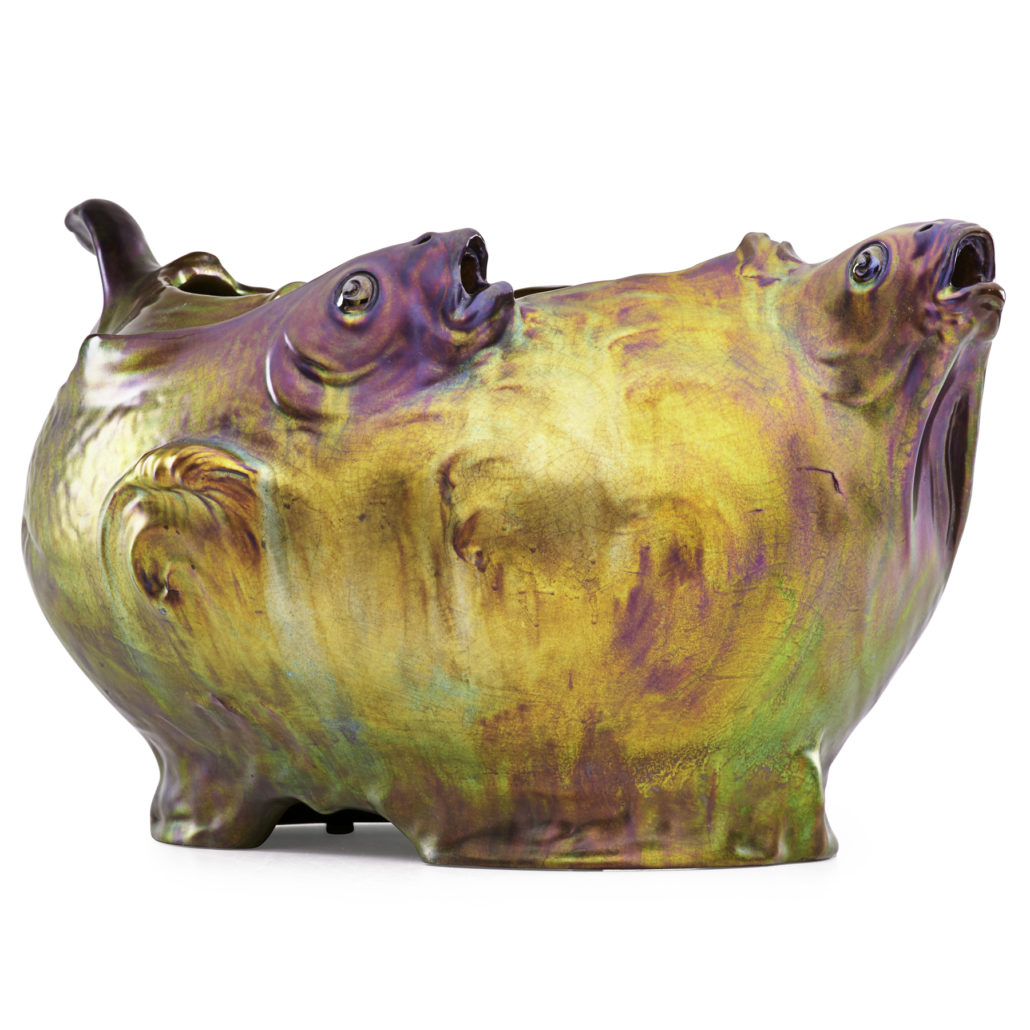
“While some of our most expensive pieces have had critters in deep relief (fish, lizards, etc.), the truth is that vibrantly decorated floral pieces are often the most exciting. I had a vase about 15 years ago that a woman found at a yard sale. It was a floral vase with poppies, about 13 inches tall, drilled for a lamp, nicks at the top rim, and with one side overfired. We had a $2-3k estimate and it brought $27,000.”
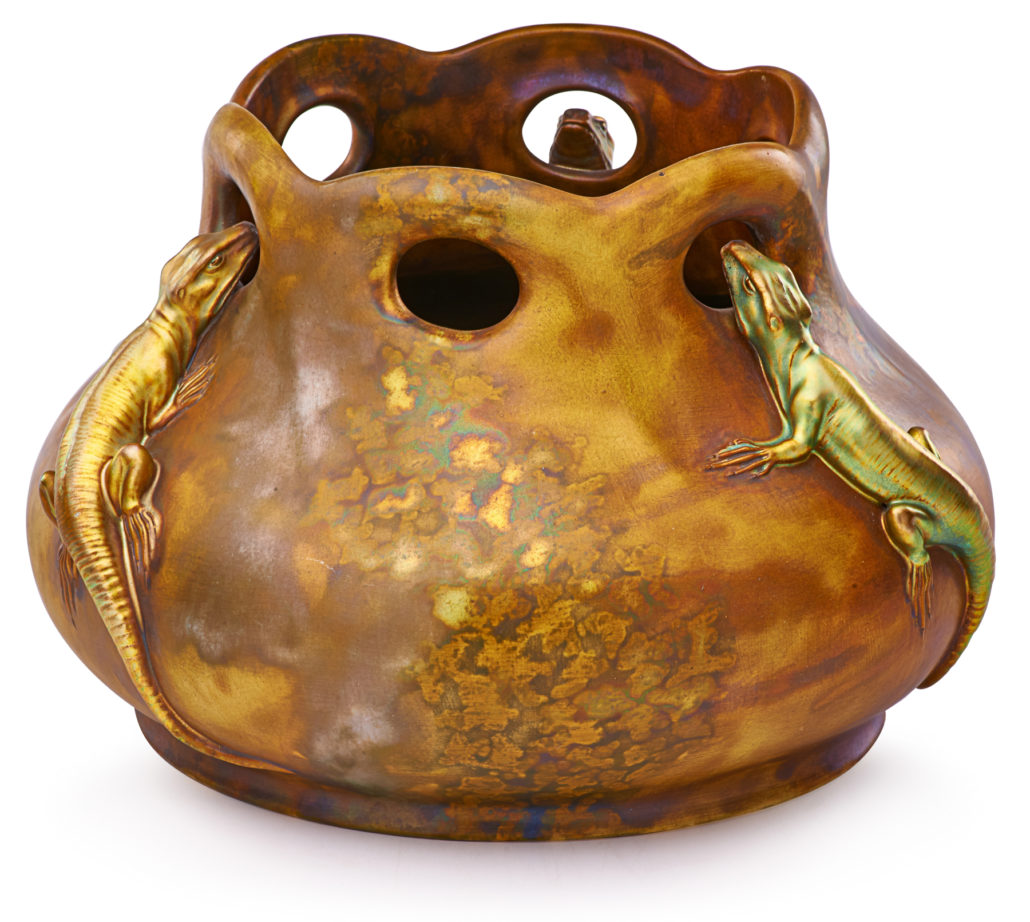
Other Zsolnay pieces that have hit auction highs include a circa 1905 iridescent vase, circa 1905, with trees in relief that sold for $60,000 at Christie’s in December 2014; and a carved vase with a pomegranate tree and dancing female figures (shown below), by renowned designer Sándor Apáti Abt, 1905, that achieved 63,330 euros in December 2013 at a Mu Terem Gallery auction in Budapest, Hungary.
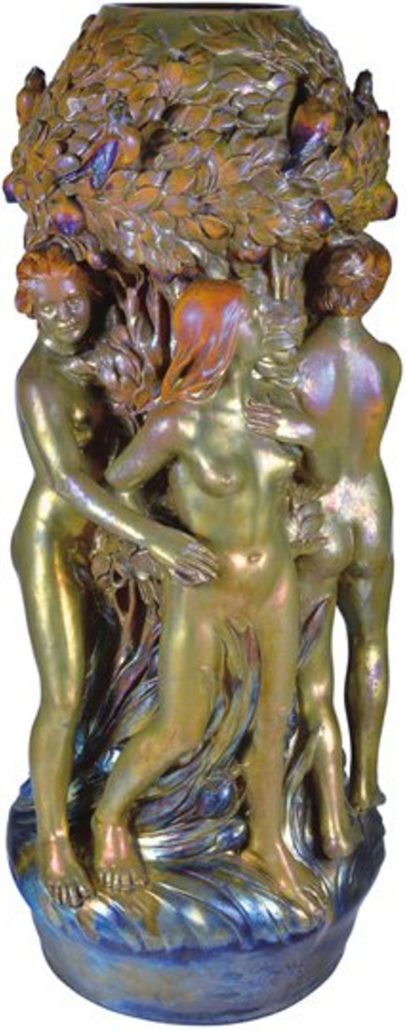
From its beginnings as a small pottery in Hungary to its international dominance within two decades, Zsolnay crafted works at the turn of the century whose artistic merit makes them just as compelling today as when they were first produced.
# # #


